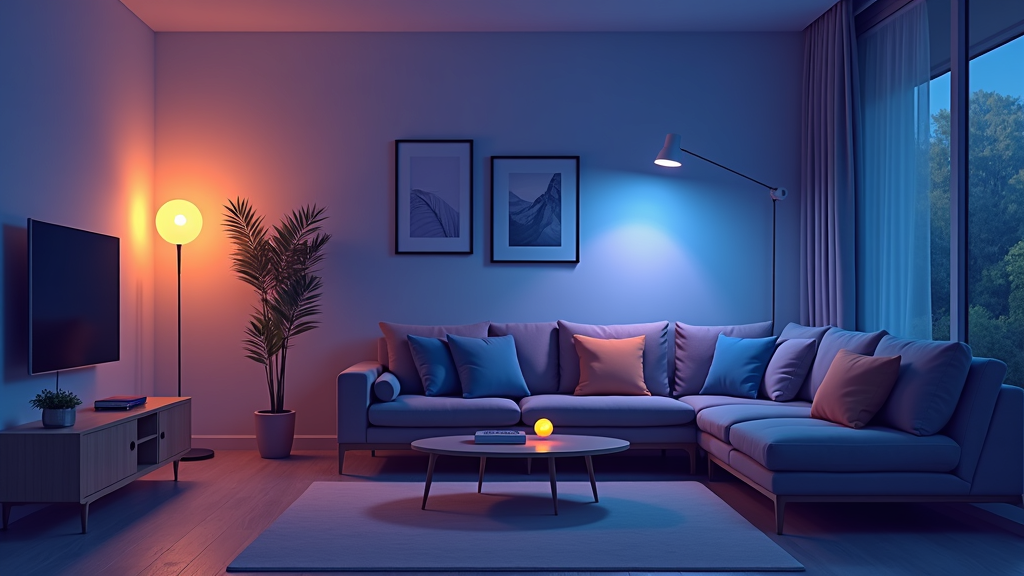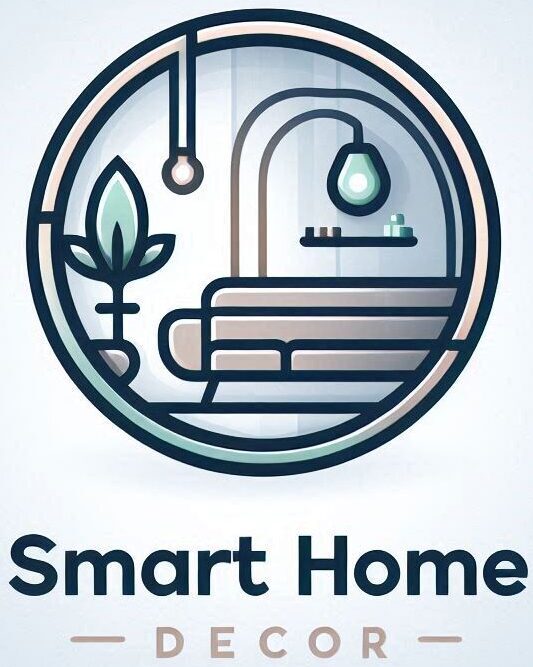Smart lighting connected to voice assistants is more than just adding some tech flair to your home. It’s super practical, pretty fun, and makes everyday routines much easier to manage. Thinking about combining your lighting with assistants like Amazon Alexa, Google Assistant, or Apple’s Siri? You’ll find loads of convenience and cool automation options worth checking out. Here, I’ll break down what you need to get set up, share tips for a smooth lighting experience, and answer questions you’re likely to face as you step up your home’s lighting.

What Makes Smart Lighting & Voice Assistants Such a Good Match?
Smart lighting has moved from a tech lover’s dream to something most people can set up and use. Pairing smart bulbs or switches with voice assistants opens up a lot of handsfree possibilities, letting you control the lights without reaching for switches or fiddling with apps. Voice commands make daily routines easier; turning off bedroom lights from under the covers or dimming the living room for movie night is just one sentence away. No wonder these smart lighting setups have gained popularity so quickly in recent years, with the global smart lighting market expected to top $20 billion by 2025.
Smart lighting doesn’t stop at being cool tech. Since voice assistants handle schedules, moods, and routines, you can set a wake-up scene that slowly brings up the lights, or a bedtime routine that switches them off everywhere at once. This can help save electricity if you sometimes forget to turn things off, and will give your home an extra boost in coziness.
Getting Started With Smart Lighting and Voice Assistants
Most beginners find the setup process approachable these days, with big brands making things compatible with Alexa, Google, and Siri right out of the packaging. Here’s what you need to know for a successful setup:
- Smart Bulbs vs. Smart Switches: Smart bulbs let you swap old bulbs with WiFi enabled ones that can change color and brightness. Smart switches, on the other hand, upgrade your wall switches so you control any fixture that’s connected.
- Voice Assistant Device: You’ll need a speaker or display such as an Echo Dot, Google Nest Mini, or HomePod Mini. Make sure it’s connected to your WiFi and set up with your account.
- Companion App: Nearly all smart lights work with their own app for setup. Once set up, you link them to your assistant using the Alexa, Google Home, or Apple Home app.
Brands such as Philips Hue, LIFX, and TPLink Kasa all provide reliable smart lighting products compatible with the main voice assistants. It’s smart to check compatibility before buying. If you want certain features or need to tie your lighting into other smart home gadgets, doublechecking compatibility saves headaches later.
Quick Start: Setting Up Your Smart Lighting
Setting up your smart lighting to work with your voice assistant usually follows these important steps:
- Choose Your Lights or Switches: Pick products labeled as compatible with Alexa, Google Assistant, or HomeKit, depending on which you use.
- Install the Lighting: Pop bulbs into your fixtures or swap out wall switches. If you’re new to wiring, a pro’s help is a good move.
- Connect to WiFi: Use the lighting brand’s app to get your lights onto your home’s network.
- Link to Your Assistant: Add your smart lighting through the Alexa, Google Home, or Home app integration menus or by “stumbling upon” new devices.
- Test With Voice Commands: Try simple commands like “turn on kitchen lights” or “dim bedroom to 30%.” Adjust naming in the app for easier use later.
Just follow these steps, and your smart lighting system will be running quickly. Modern smart bulbs and switches offer step-by-step guidance in their apps, often with easy-to-follow visuals.
Deciding What’s Right for Your Space
Not every house, apartment, or room benefits from the exact same setup. Here are a few tips to help you pick the right system:
- WiFi Coverage: Good WiFi signal in every room ensures top performance. Mesh networks can help prevent dropouts and dead zones.
- Number and Type of Fixtures: If your home has lots of recessed or oddly shaped lights, switches might save you money compared to swapping every bulb.
- Preferred Ecosystem: Already committed to Alexa or Apple? Go with compatible bulbs or switches to avoid hiccups.
- Scenes and Automation: Pick a system offering easy customization. Scenes for “morning” or “movie night” let you get more creative with your lighting.
Sometimes using both bulbs and switches is the way to go. For instance, bulbs for color in accent lamps and switches for ceiling lights offer creative flexibility and general control.
Smart Bulbs or Smart Switches?
There are tradeoffs to consider:
- Bulbs: Quick to set up, usually support color and dimming with no rewiring needed. They won’t work if the switch is off.
- Switches: Work with regular bulbs, give everyone physical control in the house, and can’t be defeated by an accidental switch flip. Installation sometimes requires basic wiring knowledge.
Common Challenges & How to Tackle Them
Most smart lighting and voice assistant setups are straightforward, but some issues can pop up:
- WiFi Issues: A weak signal is the biggest reason smart lights freeze or disappear from your app. Placing your main WiFi router centrally or using a mesh system gives you broader coverage and fewer problems.
- Device Naming Confusion: Give each light a clear name, like “Sofa Lamp” instead of “Light 1.” This makes voice commands simpler, especially with multiple devices in one room.
- Offline Devices: Sometimes, a device will show as unavailable. Power cycling it or your router will usually fix the issue.
- Compatibility Mix Ups: Doublecheck that new bulbs work with your chosen system. For example, not all WiFi bulbs play nicely with Apple’s HomeKit.
WiFi Coverage and Bulbs Dropping Offline
Smart bulbs need a solid WiFi connection. If they’re often unreachable, consider adding mesh nodes or extenders. I once struggled with a bulb at the edge of my house that cut in and out; putting a mesh node nearby solved it instantly.
Naming and Groups
Voice assistants do best when lights are organized into groups or rooms in the app. This helps you give commands like “turn off all bedroom lights” or “set dining lights to 50 percent,” instead of changing one bulb at a time. Grouping features are available in most related apps.
Extra Features: Automations, Schedules, and Scenes
Voice assistants offer much more than simple on/off commands. Here are some handy features to check out:
- Schedules: Set porch lights to come on at sunset or go off at bedtime. It gives your home a lived in look, even while you’re away.
- Scenes: Design scenes like “Dinner Time” or “Wake Up” to set multiple lights for the perfect vibe.
- Routines: Combine lighting changes with other smart actions, such as music, thermostat controls, or even locking the doors.
- Sunrise/Sunset Sync: Many platforms let you sync lights to rise or set with the sun, so lighting changes naturally as the seasons shift.
Personal tip: My “Movie Night” routine dims the living room, closes smart blinds, and powers on the TV with just one command. Owning more smart home gear makes routines like this more powerful and convenient.
Frequently Asked Questions
These are some of the most common questions folks have when starting out with smart lighting and voice assistants:
Question: Do I need a smart home hub?
Answer: Not always. Many WiFi smart bulbs and switches connect straight to your network and voice assistant. Some brands, like Philips Hue, offer a hub for advanced features, but basic use works well without it.
Question: Can I control smart lights when I’m away from home?
Answer: Yes. If your assistant and lights are set up for remote access and you have the internet, you can control everything from your phone’s assistant or app.
Question: Is smart lighting safe?
Answer: Reputable brands keep devices secure with frequent software updates. Use strong WiFi passwords and keep your apps updated, just as you would for any tech at home.
Real Life Examples of Smart Lighting With Voice Assistants
There are limitless ways to use smart lighting, from practical to creative. Here are a few examples people have shared:
- Hands-Free Cooking: Use voice commands to manage kitchen lights when your hands are full or messy from prepping meals.
- Home Security: Set lights to randomize nightly patterns so your home looks lived in, especially when you’re on vacation.
- Wake Up Lights: Some bulbs will gently get brighter in the morning, mimicking sunrise and making it easier to start your day.
Smart lighting can also be a major help for folks with mobility challenges, making spaces more accessible. Saying, “Alexa, lights on” is simpler than working a physical switch if movement is tough.
Best Practices for an Easy Experience
Here’s how to get the smoothest setup and longest lasting enjoyment from your system:
- Start with one lighting brand per room. Mixing brands early complicates pairing and troubleshooting.
- Label every lamp, fixture, and switch with plain, easy names in your apps.
- Play with scenes and automations, but keep your list focused. Too many options can make things confusing.
- Install app updates regularly for new features, security patches, and bug fixes.
Smart lighting and voice assistants are a next level cool team. A bit of setup and creativity unlocks lighting that responds to the way you live, all at your command. Whether it’s setting a party mood, securing your home, or rolling out of bed with the sunrise, you’ll wonder how you lived without it.
